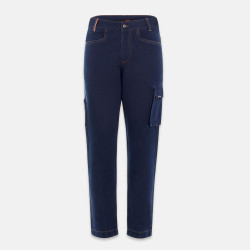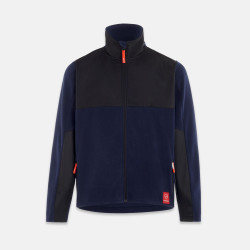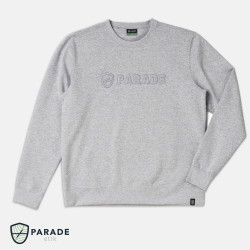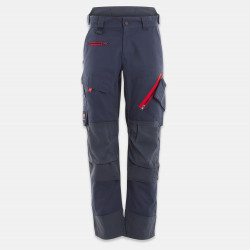Practical advice & expertise
Our advice on workwear care
Maintaining workwear is crucial to ensure their longevity, ensure employee comfort, and maintain hygiene and safety standards. Following appropriate cleaning practices can also contribute to preserving the professional image of the company. Here are our recommendations for effective workwear maintenance.

The essential steps for properly washing your work clothes
Maintaining workwear is crucial to ensure their longevity, ensure employee comfort, and maintain hygiene and safety standards. Following appropriate cleaning practices can also contribute to preserving the professional image of the company. Here are our recommendations for effective workwear maintenance.
Sorting Before Washing
Before washing, it's essential to sort clothes based on their color, level of dirtiness, and specific washing instructions. This helps avoid the risk of discoloration or fabric damage. Particularly dirty or stained clothes may require pre-treatment before machine washing.
After sorting, refer to the symbols created by COFREET to follow maintenance instructions for each garment.
The French Committee for Textile Labeling Care (COFREET) plays a crucial role in France by disseminating textile care labeling codes, through its symbols, to both businesses and consumers. In collaboration with GINETEX, an international organization, COFREET jointly owns the trademark of the five symbols representing different textile care phases: washing, bleaching, drying, ironing, and professional cleaning.
MAINTENANCE INSTRUCTIONS AND SYMBOLS :
WASHING
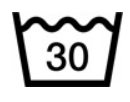
Washing colors at 30°C (normal process): Washing cycle for dark-colored items made of cotton, polyester, blended fibers, etc.
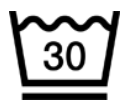
Washing colors at 30°C (moderate process): For items like modal, viscose, polyacrylic, polyester, and polyamide. Reduce the amount of laundry. Avoid spinning or use a short spin cycle to minimize wrinkling.

Washing colors at 30°C (very moderate/‘wool’ cycle): Washable wool items. This washing cycle ensures very gentle mechanical action. Substantially reduce the amount of laundry in the drum.
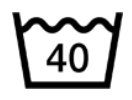
Washing colors at 40°C (normal process): Washing cycle for dark-colored items made of cotton, polyester, blended fibers, etc.
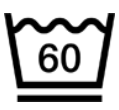
Washing colors at 60°C (moderate process): Reduce the amount of laundry (only fill the machine two-thirds full). Start with a prewash only if the items are very soiled. Avoid spinning or use a short spin cycle to minimize wrinkling.
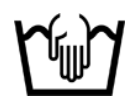
Hand wash: Hand wash at a maximum temperature of 40°C, depending on the item. Dissolve the appropriate detergent in plenty of water first. Let the textile float in the solution and agitate gently. Do not rub, pull, or twist. Then rinse thoroughly, gently remove excess water, and reshape the item. Treat delicate colored items promptly and do not let them sit "wet." If washing machines offer special "hand wash" programs, this treatment can be done in the machine.
BLEACHING
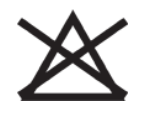
Bleaching not allowed: The barred triangle with the St. Andrew's cross indicates that bleaching is not allowed. Use detergent products without bleaching agents.
TUMBLE DRYING

Tumble drying not allowed: Items unable to withstand machine drying.

Gentle drying program: Special care is required during drying. Select a gentle program with reduced stress (60°C temperature, drying time
IRONING
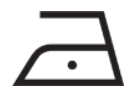
Iron at low temperature: Iron at a maximum temperature of 120°C (corresponding to polyacrylic, polyamide (nylon), acetate): If necessary, shiny or pressure-sensitive pieces can be ironed using a cloth or ironed inside out. Be cautious when using a steam iron (ideally, do not use steam). Do not distort.

Iron at moderate temperature: Iron at a maximum temperature of 160°C (corresponding to wool/silk/polyester/viscose program): Iron with a damp cloth. A steam iron can be used. Avoid excessive pressure. Do not distort.

Hot iron: Iron at a maximum temperature of 210°C (corresponding to the cotton/linen program); iron when damp; handle and, if necessary, dampen; shiny or pressure-sensitive pieces can be ironed using a press, and the garment must be ironed inside out. A steam iron can be used.
DRYING

Hanging to dry after machine spin: This tumble drying is prohibited or a specific recommendation is made by the manufacturer.

Hanging to dry without prior spinning: This tumble drying is prohibited or a specific recommendation is made by the manufacturer.

Flat drying: This drying is done after machine spin during a delicate program at a cold or 30°C. It concerns mainly woolens, bulky knit sweaters, and some acrylic garments that may deform if not dried flat.

Flat drying without prior spinning: This drying is done by dripping, either without prior machine spinning. It concerns fragile woolens (cashmere, alpaca...).
PROFESSIONAL CLEANING

Perchloroethylene dry cleaning. Normal cleaning process with no restrictions. Solvent-based stain removers may be used with some restrictions. A preliminary test on a small part of the article is recommended.

Dry cleaning prohibited: Solvent-based stain removers may not be used. Solvent-based stain removers must not be used Choosing Suitable Washing Products
Choosing the right washing products
Recommended Washing Products:
For washing workwear, prefer washing products specially designed for professional fabrics. Look for mild detergents suitable for colored garments and respectful of fibers. Products without bleaching or softening agents are preferable to preserve the integrity of fabrics and colors.
Avoided Washing Products:
Avoid using aggressive products such as bleach or fabric softeners, which can damage the fibers of workwear and shorten their lifespan. Similarly, detergents containing optical brightening agents can alter colors and compromise the professional appearance of outfits.
CLEVERCARE, Recommendations for Eco-Friendly Textile Care
Sustainability is precisely one of COFREET's three strong axes. In order to raise consumer awareness about textile care, since 2014 COFREET has provided information on eco-care via its website clevercare.info, as textile product care represents a significant part of its environmental impact.
The clevercare.info approach offers concrete benefits, including preserving textile product quality, extending their lifespan, reducing carbon footprint, and saving energy. By doing so, you contribute to prolonging the life of your clothes while having a positive impact on the environment!
Many tips for eco-responsible textile care are available on the website www.clevercare.info. You will find practical recommendations such as:
- Opting for shorter washing cycles and lower temperatures than recommended when textiles are lightly soiled.
- Using steam from the shower to soften garment fibers, facilitating ironing.
- Airing out lightly worn garments instead of washing them systematically.
The clevercare.info logo is located below the 5 care symbols on labels as illustrated below.
.JPG)
Is employer responsible for workwear maintenance ?
Workwear maintenance is often a shared responsibility between the employer and employees, although this may vary depending on company policies and regulations. Generally, the employer provides workwear, but it's the responsibility of employees to maintain them properly.
Regulations regarding workwear maintenance may also be defined by professional standards or specific requirements in certain industries. In many cases, employers may provide allowances or reimbursements to cover expenses related to workwear maintenance, such as dry cleaning or purchasing specialized washing products.
It's essential for employers to provide clear guidelines on workwear maintenance and ensure that employees have the necessary resources to keep their uniforms in good condition. By promoting proper maintenance practices, companies can ensure the safety, comfort, and professional appearance of their employees in the workplace.
RELATED PRODUCTS
DISCOVER OUR NEWSLETTER
By entering your email address, you will receive our newsletter with our latest products, services, news and advice on prevention and safety.

